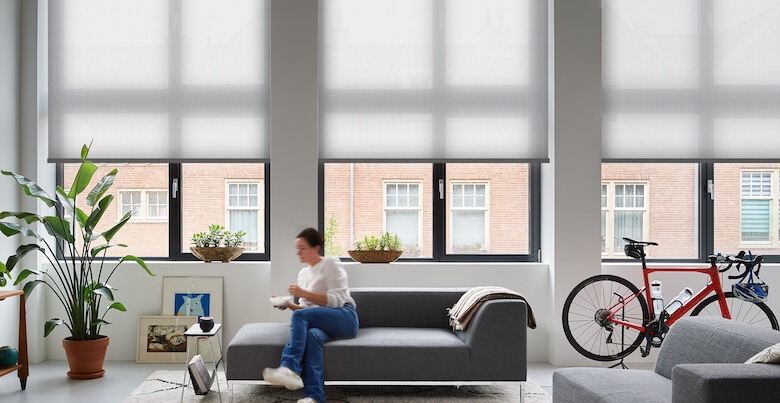





-
samples 0
-
4.4 /5
- Contact
- Help center
- Login/Register
Do you have one or more tilt and turn windows in your home and are looking for a suitable solution? Then take a look at Smartblinds' smart roller blinds. Smartblinds can be configured so that you can easily install them on your tilt and turn window. What options there are and how best to measure and install them, you can read below.
There are a number of things to consider when looking for window blinds for tilt and turn windows. First of all, a tilt and turn window is different from a fixed window because they are almost always made of plastic or aluminium. Understandably, you do not want to drill into these materials, so you need to look for other options when it comes to installing window blinds on your tilt and turn window. In addition, as the name suggests, a tilt and turn window has a turn and tilt function that you need to take into account when installing. If you install a roller blind or other type of window blind in the recess of your tilt and turn window, the window blind system will interfere with your window's ability to turn and tilt. Therefore, for a tilt and turn window, it is better to opt for installation on the window itself. But what options do you have in this?





Want window blinds for your tilt and turn window, but don't want to drill? Then you can choose clamp brackets for both the attachment of your roller blind and the attachment of the wire side guide for your tilt and turn window. The clamp supports can be clamped onto your tilt and turn window without damaging the plastic or aluminium.
It is important to know the criteria for window blind for a tilt-and-turn window. Clamp supports and wire side guides are both only possible in combination with a small side support system. The dimensions of your tilt-and-turn window should therefore be no wider than 170 cm and no higher than 175 cm. In addition, you can only choose wire lateral guidance in combination with an upholstered bottom rail or a hem bottom rail. Wire side guidance is not possible with a metal bottom rail.
A roller blind for your tilt and turn window should always be measured on the moving part of your tilt and turn window and fitted on the day. When measuring the height, make sure you measure the moving part of the window. So logically, start at the top, where you want to mount the clamp supports. Stop measuring where you want to mount the supports for the bottom of your wire side guide. This is how you determine the height.
When measuring the width, it is important to measure from the handle of your tilt and turn window and not just the glass. This creates an overlap between the glass and the latch. On the other side of the glass, measure the same overlap as on the side with latch.
